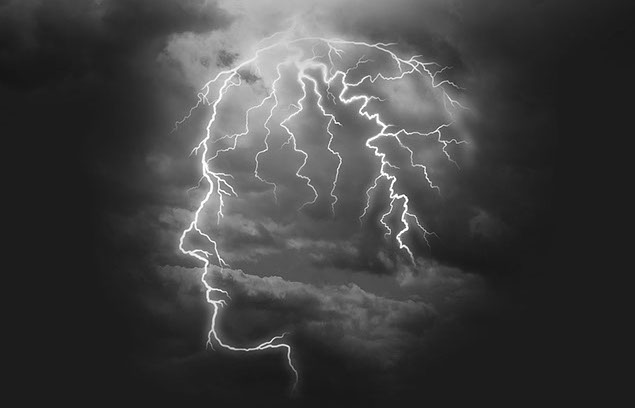The unconscious mind – when neuronal activity occurs (as recorded in functional magnetic resonance imaging, or fMRI) but there is no corresponding awareness of conscious experience – has an almost mythical status thanks to Sigmund Freud, who was a great populariser of its influence over our actions and conscious selves. But among philosophers and psychologists, its nature has been much debated. Is it really separate from the conscious mind? What determines whether neurons are conscious or unconscious?
Dr Lau Hakwan of the Department of Psychology, who trained as both a philosopher and neuroscientist, has entered into the fray with the modest goal of seeing whether a little science can shed light on the matter.
“Philosophy, after centuries of thinking, has led us to this point where we think the qualitative subjective experience is the core crucial conceptual component of consciousness. But how do you actually translate that concept into an experiment?” he said.
Working with an international team of collaborators, he helped design and run an experiment on phobias that was able to tap into the unconscious mind and transmit more pleasant signals when phobia-associated signals arose. The results were published in the Proceedings of the National Academy of Sciences of the United States of America in March, 2018.
The methodology they used was complicated and involved bypassing the conscious brain so as not to trigger the phobia directly. This was important because otherwise subjects might quit or be resistant to the experiment.
Counter-conditioning
Unconscious representations of phobias were first mapped by showing subjects photos of creatures that were related to their phobias, but themselves not frightening (for example, other insects or reptiles if they feared spiders or snakes) while they underwent fMRI. The researchers were able to see the detailed pattern of areas of brain activity triggered by the images and this guided them in the main part of the experiment, which was to associate those patterns of brain activity with a positive reward.
The subjects played a game that used unrelated images to tap into the target unconscious regions and were told that they had won money whenever those patterns of brain activity representing the phobic objects were activated.
“This approach comes from a method in psychology called ‘counter-conditioning‘. You re-expose the patient to the feared object and try to re-associate that object with a positive rather than a negative feeling,” he said.
“The problem is, people tend not to enjoy that very much. In extreme cases, like posttraumatic stress disorder (PTSD), asking people to live through trauma is very difficult. As a neuroscientist, I have tried to translate exposure therapy into the brain by pairing a good feeling with the brain representation of the feared object.”
The results were intriguing because while the subjects subsequently had a lowered physiological response after seeing a photo of their feared object – such as sweating less and having less activity in the associated region of the brain – they did not report that they felt any less afraid.
“The experiment here is basically a way of going under the conscious hood, trying to tamper with people’s unconscious representations and hoping that would actually change their everyday experience,” Dr Lau said.
“We have definitely done something about the brain-fear response, but it has not yet translated into the conscious experience.”
The ‘hard’ problem
The results are nonetheless important both for possible treatment of such things as PTSD– particularly as it can bypass the triggers of stress or fear – and for our understanding of the interplay between the unconscious and conscious mind.
“If it were true that one part of your brain is conscious and one part not conscious, and the two work independently, then tampering with only the unconscious part may not do much good. It would just help the unconscious part to be less afraid, but you would still consciously be afraid.
“We, on the other hand, think that these are the same representations in the brain for both processes. So tampering with the representations when you are unconscious would eventually translate to a conscious experience. That’s what we plan to demonstrate next.”
Dr Lau concedes that consciousness is a difficult thing to solve entirely through science– it is not trivial to explain why subjects should feel a certain way when neurons can be seen firing, even if we can map out the patterns of such firing. For this reason, and also because of modern resistance against the Freudian perspective, it is often challenging to get funding for projects about consciousness.
“In philosophy we traditionally think of consciousness as the ‘hard’ problem because it is not easy to explain the subjective from the objective and scientific point of view. But a problem doesn’t have to be a scientific problem for science to shed light on it,” he said.
By learning to pair a reward with the unconscious activation of the brain pattern representing the animal, participants can overcome the fear response to an animal.

ONE CONSCIOUSNESS, UNDIVIDED
Experiments using signals delivered to the unconscious mind have reduced the physical effects of phobia. The findings have implications for treatment and for our understanding of human consciousness.


![]() The experiment here is basically a way of going under the conscious hood, trying to tamper with people’s unconscious representations and hoping that would actually change their everyday experience.
The experiment here is basically a way of going under the conscious hood, trying to tamper with people’s unconscious representations and hoping that would actually change their everyday experience. ![]()
Dr Lau Hakwan
Back
Next
_01.png?crc=4174553115)
_12.png?crc=282960334)